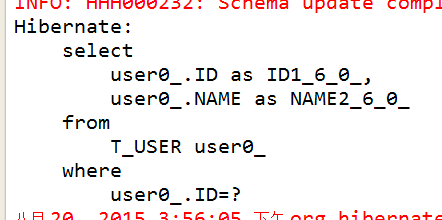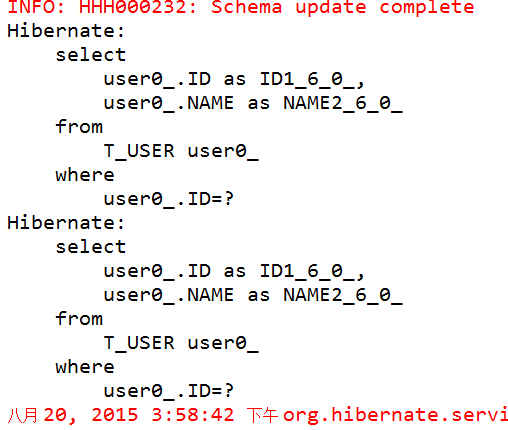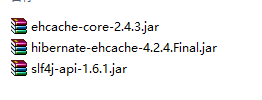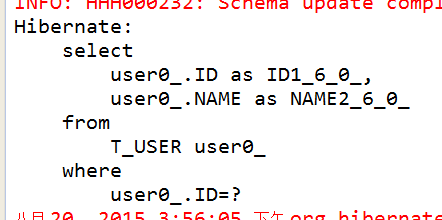JPA學習筆記(11)——使用二級快取
阿新 • • 發佈:2019-01-24
一級快取
查詢兩次id為1的user
User user1 = entityManager.find(User.class, 1);
User user2 = entityManager.find(User.class, 1);結果發現只調用了一次sql查詢,因為使用了一級快取
如果查詢一次後,關掉entityManager,再查詢
User user1 = entityManager.find(User.class, 1);
entityManager.close();
entityManager = factory.createEntityManager();
User user2 = entityManager.find 發現查詢了兩次,因為entityManager關閉之後,快取也就沒有了。
使用二級快取
所謂的二級快取,也就是可以跨entityManager的快取,也就是說:就算你關閉了entityManager,快取也依然在。
在配置檔案persistence.xml中配置
<!-- 二級快取相關 -->
<property name="hibernate.cache.use_second_level_cache" value="true"/>
<property name="hibernate.cache.region.factory_class" 快取需要以下jar包:
在src下加入一個配置檔案:ehcache.xml,這個檔案直接拷貝來用就行了,不用理會裡面的內容,有需要的時候再研究也不遲
<ehcache>
<!-- Sets the path to the directory where cache .data files are created. 啟用二級快取:
1.在實體類上加註解@Cacheable(true)
@Cacheable(true)
@Table(name="T_USER")
@Entity
public class User ...2.在配置檔案persistence.xml中配置二級快取的策略
<!--
配置二級快取的策略
ALL:所有的實體類都被快取
NONE:所有的實體類都不被快取.
ENABLE_SELECTIVE:標識 @Cacheable(true) 註解的實體類將被快取
DISABLE_SELECTIVE:快取除標識 @Cacheable(false) 以外的所有實體類
UNSPECIFIED:預設值,JPA 產品預設值將被使用
-->
<shared-cache-mode>ENABLE_SELECTIVE</shared-cache-mode>注意:這個配置要放在provider 節點和class 節點後面
再次執行
User user1 = entityManager.find(User.class, 1);
entityManager.close();
entityManager = factory.createEntityManager();
User user2 = entityManager.find(User.class, 1);結果只調用了一次sql查詢語句,說明二級快取 起作用了。




